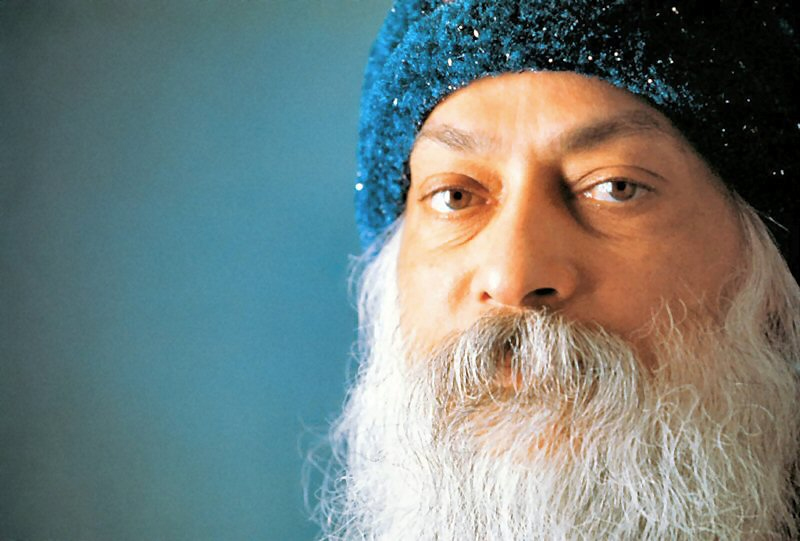
15 Jan 2022 HYN Himalayan Yoga Academy
Osho or Bhagwan Shree Rajneesh was a popular and powerful speaker who was born in 1931 in Central India and was the eldest of 11 children of a cloth merchant. He was the leader of a worldwide new spiritual movement. Rajneesh emphasized the importance of free thought, meditation, love, courage, creativity, and humor. At the age of 21, he had an intense spiritual awakening. At that time he was studying philosophy at the University of Saugar. Then after a Master’s degree, he taught philosophy at the University of Jabalpur for nine years. After that, he resigned from the University and became a Guru and teacher of Meditation.
In 1974, he moved with his disciples to Pune, India and he established a new Ashram on six acres. The basic center was called dynamic meditation, a process designed to allow people to experience the divine. He also became well-known for his progressive approach to sexuality, which is different from the thoughts of other Indian Teachers. In 1980, he was attacked by Hindu fundamentalists who disagreed with Osho’s unconventional stance on religion and spirituality. So he left India and moved to America.
His disciples bought a large plot of land near Antelope, Oregon, to refocus on the Rajneesh movement’s activities. Soon after, the movement clashed with local residents and the state government. Tensions at the Poona ashram, along with criticism of its activities and threats of punitive action from Indian authorities, pushed the ashram to consider establishing a new commune in the United States. While legal battles unfolded, Rajneesh stayed behind the scenes, withdrawing from a public-facing role. On 30 October 1985, he broke his silence, announcing it was time to “speak his own truths.”
He was later deported from the United States through an Alford Plea bargain. After his deportation, 21 countries denied him entry. He returned to Mumbai, India, in 1986, where his Indian disciples gave him a hero’s welcome. In 1987, he settled back in the Poona ashram, where he began giving evening discourses. In February 1989, he expressed his desire to be called “Osho.” He gave his last public discourse in April 1989 and thereafter sat in silence with his followers. Osho died on 19 January 1990, aged 58, reportedly of heart failure.

Osho on Meditation
Rajneesh presented contemplation not just as a practice but as a state of mindfulness to be maintained in every moment. This total mindfulness awakens the individual from the sleep of mechanical responses conditioned by beliefs and expectations. He used Western psychotherapy in the early stages of contemplation to help individuals become mindful of their internal and emotional patterns.
He suggested further than a hundred contemplation ways in aggregate. His own” active contemplation” ways are characterized by stages of physical exertion leading to silence. The most notorious of these remains Dynamic Contemplation which has been described as a kind of example of his outlook. Performed with closed or blindfolded eyes, it comprises five stages, four of which are accompanied by music.
First the meditator engages in ten moments of rapid-fire breathing through the nose. The alternate ten twinkles are for catharsis” Let whatever is passing be.. Laugh, cry, laugh, jump, shake — whatever you feel to do, do it. Next, for ten twinkles one jumps up and down with arms raised, crying Hoo! each time one lands on the flat of the bases. At the fourth, silent stage, the meditator stops moving suddenly and completely, remaining fully motionless for fifteen twinkles, witnessing everything that’s passing. The last stage of the contemplation consists of fifteen twinkles of dancing and festivity.
Rajneesh developed other active contemplation ways, similar to the Kundalini” shaking” contemplation and the Nada Brahma” humming” contemplation, which are less animated, although they also include physical exertion of one sort or another. After” pensive curatives” bear sessions for several days, OSHO Mystic Rose comprised three hours of laughing every day for a week, three hours of weeping each day for an alternate week, and a third week with three hours of silent contemplation. These processes of” witnessing” enable a” jump into mindfulness. Rajneesh believed similar cathartic styles were necessary because it was delicate for ultramodern people to just sit and enter contemplation. Once these styles had handed a regard of contemplation, also people would be able to use other styles without difficulty.
Rajneesh’s Some Commandments
- Never obey anyone’s command unless it is coming from within you also.
- Life is now and here.
- Live wakefully.
- There is no God than the life itself.
- Truth is within you, don`t search for it elsewhere.
- Love is prayer.
- Die each moment so that you can be new each moment.
- Do not swim- float.
